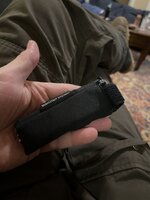There is a lot of old, beyond proven incorrect nonsense that is being repeated from the 60’s and 70’s about TQ’s in here. The longest war in American history where TQ usage was the very first thing that was applied any time penetrating trauma or anything beyond light bleeding was shown. “Put a TQ on immediately” is what TCCC and every advanced field care has taught since 2001 time frame. There have been exactly 0 confirmed limbs lost due to short term immediate use of TQ as of 2016’ish.
Get to a legit training course, TQ immediately with penetrating trauma to a limb, or major bleeding. Once blood loss has been controlled, revaluate and potentially switch to hemostatic dressing. The reason you don’t use a TQ “after everything else has failed”, is because by the time something has failed, if you needed a TQ you are already done.
Worse than that it’s “don’t put a TQ on it, use a shoe lace”. I’ve seen a lot of TQ’s applied, I’ve applied them on myself. I give about zero credence what US based DR’s in an ER with the best lifesaving equipment on the planet and a full staff has to say about their use. That context has zero relevance with someone being miles from a vehicle and stopping major bleeding.
Because of those exact DR’s and their opinions, TQ use was the “last ditch effort” for every war before 2001 and costs the lives of tens of thousands of people.



